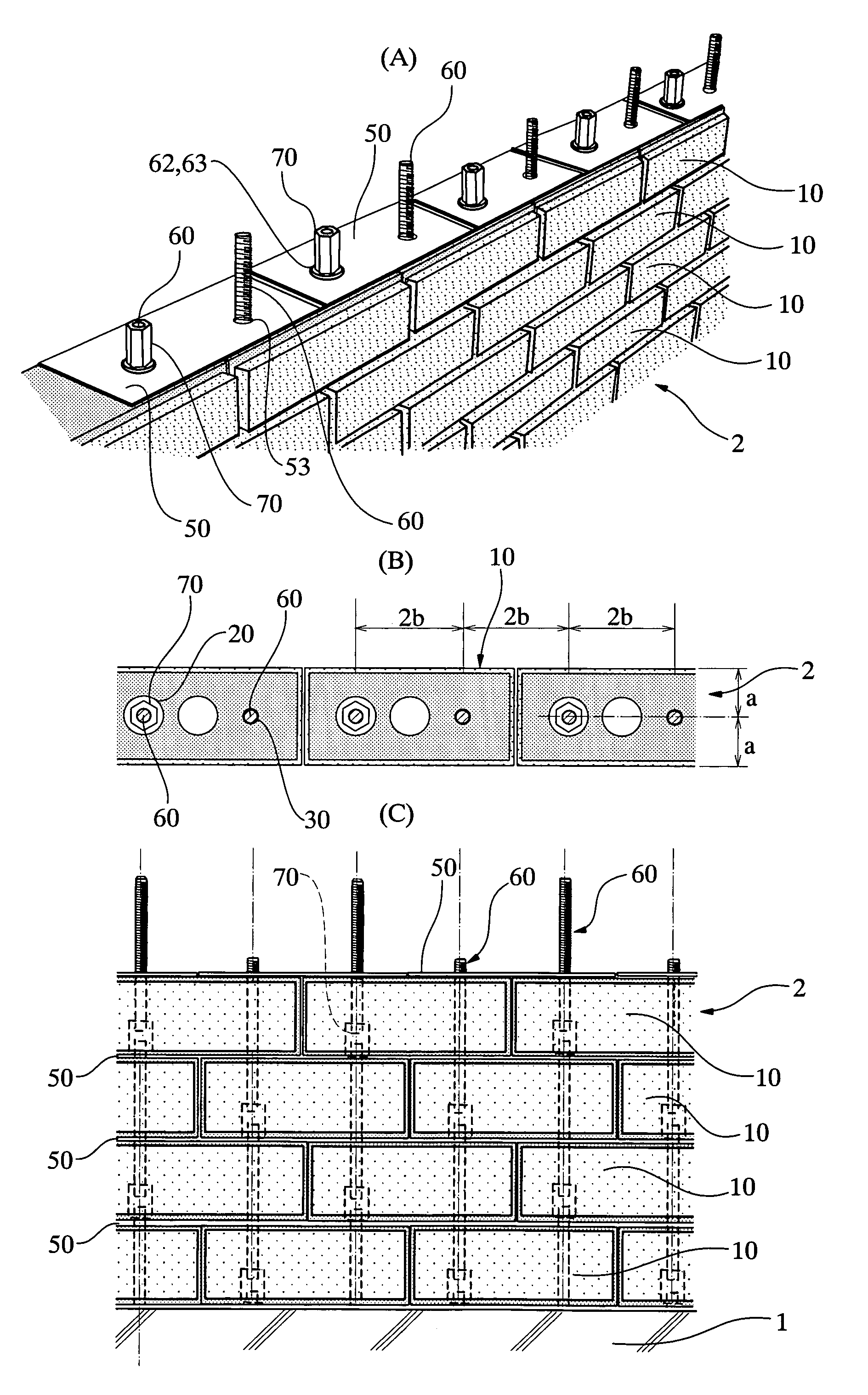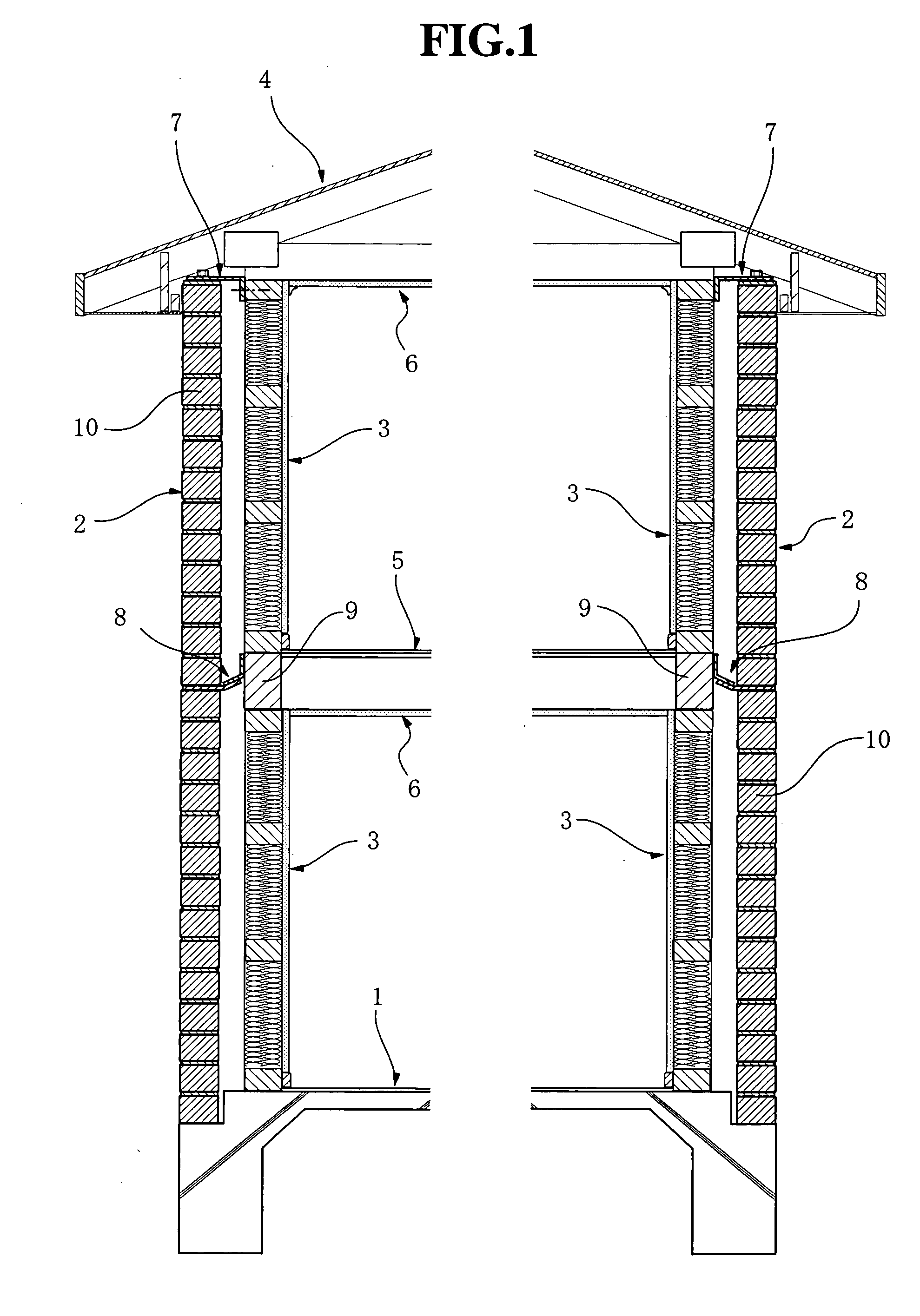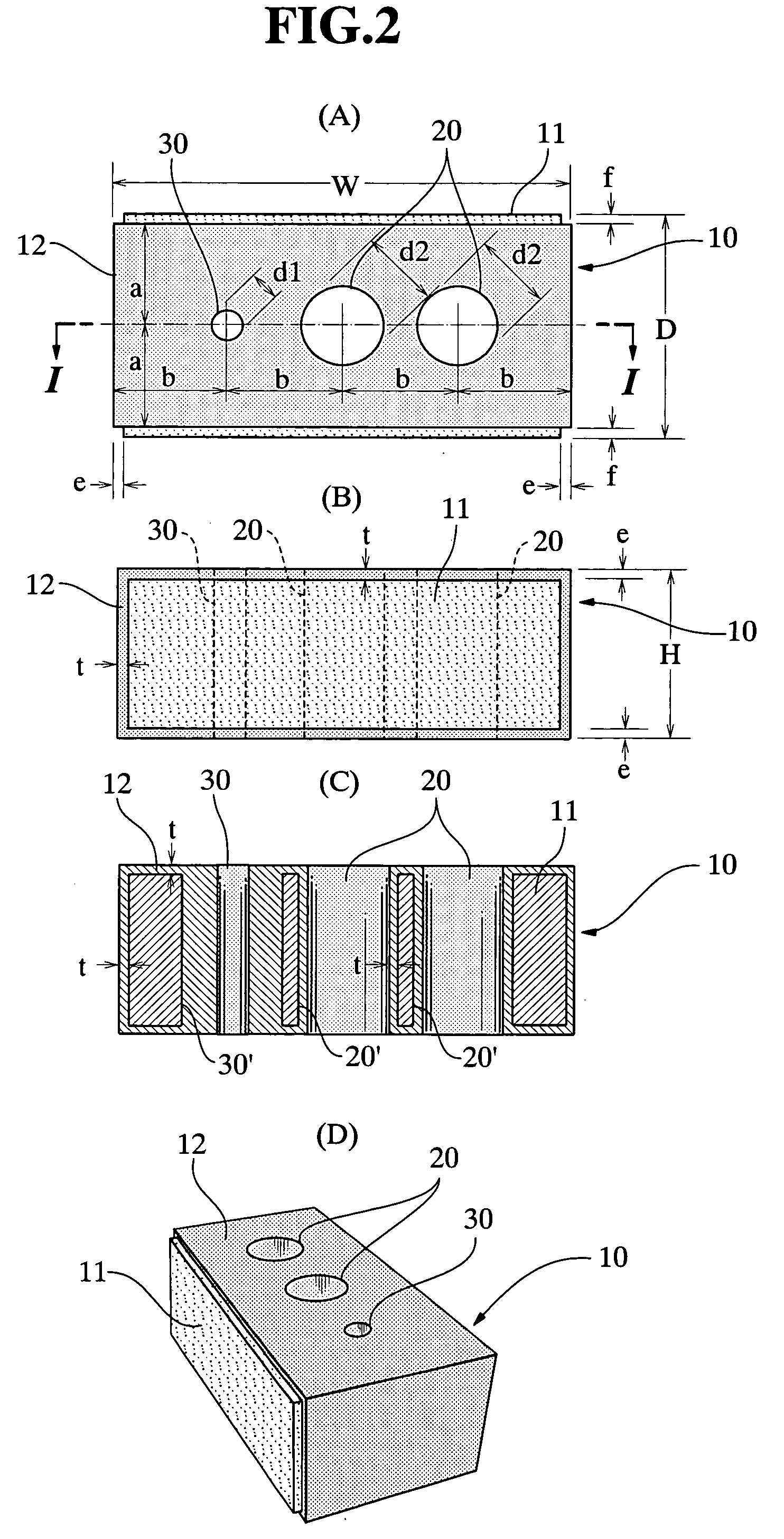Method For Forming Masonry Unit
a technology of masonry unit and masonry, which is applied in the direction of foundry moulding apparatus, building repairs, foundry patterns, etc., can solve the problems of reducing the productivity and inexpensiveness of bricks, affecting and unable to adjust the accuracy of masonry by fresh mortar, so as to improve the productivity of bricks and promote the efficiency of brick production process.
- Summary
- Abstract
- Description
- Claims
- Application Information
AI Technical Summary
Benefits of technology
Problems solved by technology
Method used
Image
Examples
Embodiment Construction
[0048]With reference to the attached drawings, a preferred embodiment of the present invention is described hereinafter.
[0049]FIG. 1 is a cross-sectional view illustrating an architecture with brick walls constructed in accordance with DUP Construction Method.
[0050]The architecture is provided with a foundation and floor slab 1, outer walls 2, inner walls 3, a second floor framing 5, ceilings 6, a roof truss 4, and roofing materials (not shown). The outer walls 2 are brick walls laid on the foundation and floor slab 1 in accordance with the DUP Construction Method. The inner walls 3 are constructed by wooden panels which are conventionally used in a two-by-four wooden construction. The walls 3 are built up on the foundation and floor slab 1. The roof truss 4 is supported by upper ends of the inner walls 3. The roofing materials are provided on an upper surface of the roof truss 4. The load of the roof truss 4 acts on the inner walls 3 as a vertical load, which are supported by the l...
PUM
| Property | Measurement | Unit |
|---|---|---|
| thickness | aaaaa | aaaaa |
| length | aaaaa | aaaaa |
| height | aaaaa | aaaaa |
Abstract
Description
Claims
Application Information
 Login to View More
Login to View More - R&D
- Intellectual Property
- Life Sciences
- Materials
- Tech Scout
- Unparalleled Data Quality
- Higher Quality Content
- 60% Fewer Hallucinations
Browse by: Latest US Patents, China's latest patents, Technical Efficacy Thesaurus, Application Domain, Technology Topic, Popular Technical Reports.
© 2025 PatSnap. All rights reserved.Legal|Privacy policy|Modern Slavery Act Transparency Statement|Sitemap|About US| Contact US: help@patsnap.com



